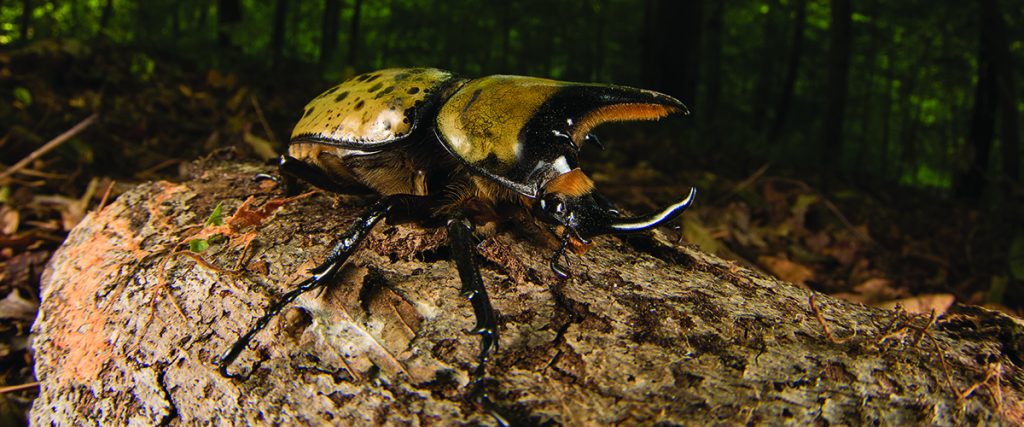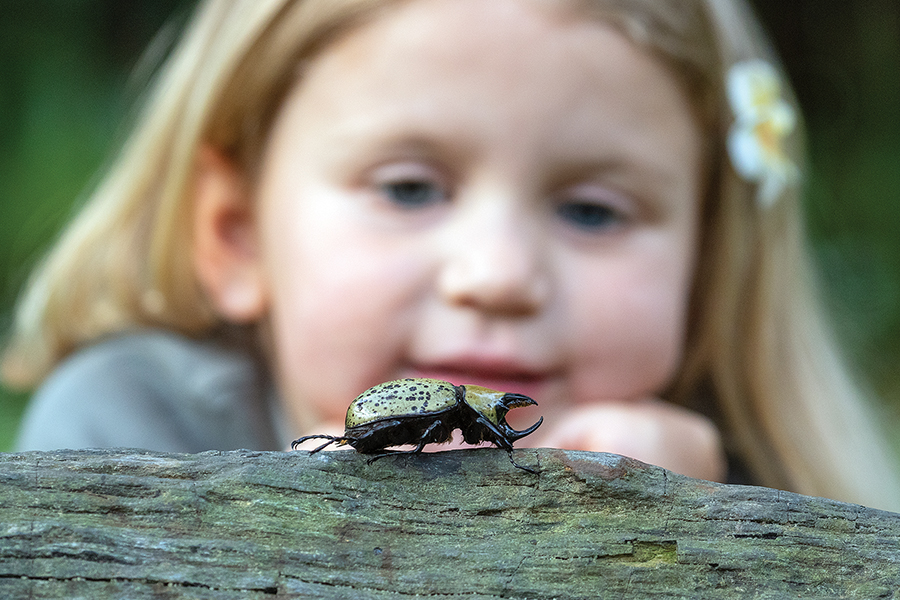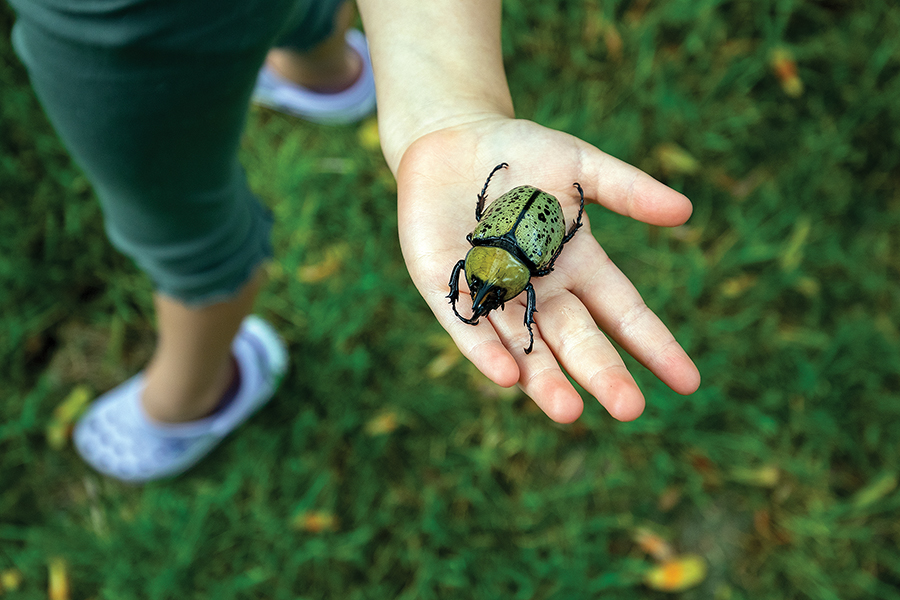Naturalist

The Gateway Bug
A spectacular insect can lead to a lifetime of wonder
Story and Photographs by Todd Pusser

The memory has stayed with me for decades. It was a humid summer night in the early 1980s, and we had just finished a dinner of grilled hot dogs in the backyard of our Eagle Springs home. Cacophonous calls of whip-poor-wills echoed through the pines while billions of stars lit up the night sky. Wanting to cool off from the oppressive heat, which was still prevalent late into the evening, I decided to take a dip in the backyard pool. As I flipped on a mercury vapor bulb mounted to a tall pole, the entire backyard was instantly flooded in brilliant light.
As I climbed up onto the diving board, it came streaking in from the corner of the yard like a shooting star. Swooping low over the pool, it suddenly arched high, crashed into the light with an audible thud, and tumbled down to the concrete, where it came to rest on its back, legs waving feebly back and forth in the air. “What is that thing?” I wondered aloud.
Jumping off the diving board, I walked over and carefully flipped the hefty 2-inch-long insect over onto its belly. It had a yellowish-green body covered in black spots. A pair of long horns extended out from its head, giving it the appearance of a miniature rhinoceros. At the time, it was among the largest insects that I had ever seen. I would hate to be driving down a rural road at night in a convertible and get walloped upside the head by one.
I picked the insect up and placed it into a mason jar. The next day I proudly showed it to my parents, who, for some strange reason, were not nearly as thrilled as I was with the monster invertebrate. Soon afterward, it was released into the woods behind our house. While thumbing through the pages of a field guide at the school library, I later learned that it was an Eastern Hercules beetle that had interrupted my nocturnal swim.

Most people fear bugs. Many loathe them. Insects found in homes are immediately squashed under foot or dispatched with a well-aimed can of Raid.
All this fear and loathing is learned behavior, taught to us as children. Granted, some insects should be treated with caution, like yellowjackets, capable of delivering a painful sting, or mosquitoes that can harbor disease. But even these maligned critters play critical ecological roles. As hard as it may be to imagine, their extinction would have profound effects on the overall health of the planet and our own well-being.
A respect for all forms of life, including insects, is something my partner, Jessica, and I have tried to instill in our daughter, Ella. The summer before last, while filling up with gas late one night out on the outskirts of the Dismal Swamp, I found another male Hercules beetle. Attracted to the bright lights of the gas station, the behemoth was slowly crawling across the parking lot when I noticed it. Scooping it up, I brought it home to show Ella the next day. I still smile at the thought of her eyes widening in surprise at seeing the goliath insect, her little mind instantly filling with joy and wonder.
Kids have an innate curiosity of the natural world. But in this digital age, children are becoming more and more disconnected with nature. Less time is spent outdoors and more time is spent staring at a computer screen. To remedy this, Jessica and I take every opportunity to introduce our daughter to the wonders of nature, wherever that might be. A trip to the beach is not just for swimming and building sandcastles, but also for watching pelicans fly low over the waves and for picking up colorful shells washed ashore by the tide. A family walk through the neighborhood is a chance to spot squirrels foraging among a canopy of oaks and pines. Sunsets in July are opportunities to catch fireflies in the backyard.
All these seemingly little things, those brief moments of taking the time to simply observe the world around us, can really add up and profoundly shape impressionable young minds. My fondest childhood memories involve those innocuous moments in nature — everything from catching bluegills with my dad in an Eagle Springs farm pond on Saturday morning to watching my first dolphins frolic in the Myrtle Beach surf. And, of course, the giant beetle crashing my pool party. That childlike wonder has stayed with me for nearly five decades now and only grows stronger with each passing year.
How kids respond to nature and how they teach and raise their own children will shape how our societies function and will ultimately affect the overall well-being of this planet. It is my sincerest hope that our daughter continues to grow and maintain a sense of awe, respect, and love for the remarkable world around her. In time, I hope she passes that love for all living things down to her own children — even a love for big bugs. PS
Naturalist and photographer Todd Pusser grew up in Eagle Springs. He works to document the extraordinary diversity of life both near and far. His images can be found at www.ToddPusser.com.
